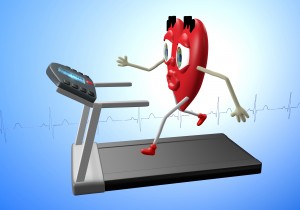-
Tuesday Q & A: Cardiac rehab beneficial for variety of heart disorders
DEAR MAYO CLINIC:
What does cardiac rehab involve? Do you recommend it for everyone who’s had a heart attack, or only in certain cases?
ANSWER:
Cardiac rehabilitation is extremely beneficial for people with a variety of heart disorders. It involves a combination of medically supervised exercise, education and risk factor management.
The goals of cardiac rehabilitation are to reduce symptoms, improve physical and mental function, and prevent further heart problems. People who participate in cardiac rehabilitation are less likely to be readmitted to the hospital, and they enjoy a 25 to 45 percent improvement in survival rates compared with people who do not engage in cardiac rehabilitation.
Cardiac rehabilitation is definitely recommended for individuals with the following diagnoses: heart attack; percutaneous coronary intervention, including coronary angioplasty and stents; chronic stable angina; coronary bypass surgery; heart valve repair or valve replacement surgery; heart transplant; and systolic heart failure (impaired heart contraction).
In most cases, cardiac rehabilitation begins as soon as possible after diagnosis of a heart condition or after dismissal from the hospital. Cardiac rehabilitation typically includes at least one supervised session per week and continues over three to four months, with a total of about 36 sessions.
A team of health care professionals from a range of specialty areas provides care for people in cardiac rehabilitation. Depending on a person’s individual needs, the team may include experts from cardiology, exercise physiology, nursing, physical medicine and rehabilitation, nutrition, psychology and psychiatry, endocrinology and sleep medicine, among others. The team communicates with the participant’s primary health care provider regarding progress in the program.
Exercise training is a key part of cardiac rehabilitation. For each participant, the rehabilitation team develops an individualized exercise program, also called an exercise prescription, often based on information gathered during a graded exercise test.
The exercise program includes a combination of aerobic exercise and strength training, as well as exercises to improve balance and flexibility. Initially, people starting cardiac rehabilitation perform the exercises with medical supervision. As they become more familiar with their exercise program, however, the team encourages participants to exercise independently at home or in another setting, such as a fitness center or gym, in addition to the supervised sessions.
In addition to exercise, counseling and education play a vital role in cardiac rehabilitation. Participants learn about their specific disease and how they can be active partners in managing their cardiac condition.
In particular, the cardiac rehabilitation team provides instruction on the importance of taking medications as directed. They teach participants about ways to improve cardiovascular risk factors such as blood lipids, blood pressure, blood sugar, depression and sleep apnea. Participants learn how to manage any chronic symptoms they may have, such as chest pain or fatigue. Participants are encouraged to make heart-healthy lifestyle choices. The rehabilitation team teaches about healthy eating principles and the importance of avoiding exposure to tobacco. Participants also learn through peer support by interacting with others who are participating in cardiac rehabilitation.
Throughout the program, the cardiac rehabilitation team tracks participants’ progress and health. They routinely measure blood pressure at rest and during exercise. During supervised exercise, it is also standard practice for the team to monitor the electrocardiogram — a test that records electrical signals as they travel through the heart. These steps help to protect participants’ safety and achieve the best possible results from cardiac rehabilitation.
In short, for people with a variety of heart conditions, participation in cardiac rehabilitation is a critical component of a treatment plan that can help ensure they improve their cardiovascular health as much as possible. — Ray Squires, Ph.D., Cardiovascular Diseases, Mayo Clinic, Rochester, Minn.







